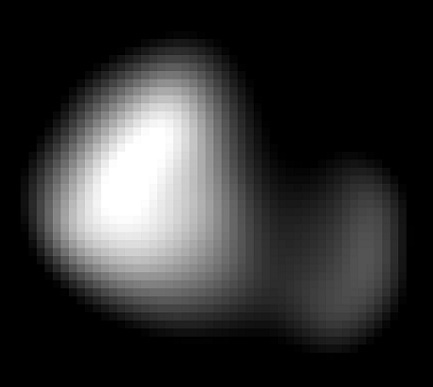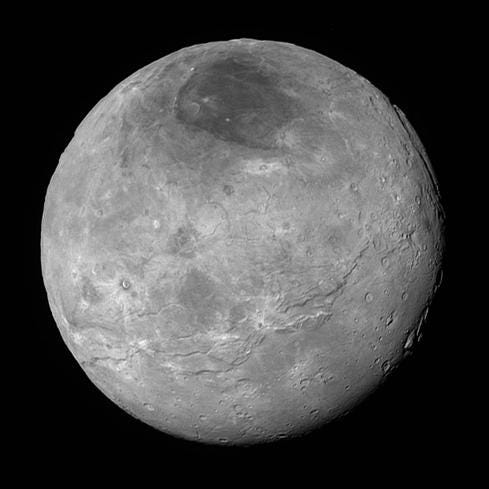New Horizons is reporting more information about the most far-flung planet in our Solar System as NASA publishes photos of Kerberos, Pluto's smallest moon.


NASA's New Horizons Transmits New Pluto, Charon Images
NASA's New Horizons Transmits New Pluto, Charon Images (Click image for larger view and slideshow.)
NASA's New Horizons mission to Pluto has been a resounding success on all levels, and new information continues to dazzle scientists and the general public alike. The latest images include the dwarf planet's tiny moon -- Kerberos -- completing its family portrait.
The images appear to show the highly reflective surface of a satellite smaller than NASA scientists predicted.
Earlier theories posited that Kerberos was relatively large and massive, appearing faint only because its surface was covered in dark material.
However, New Horizons' images detail a small, bright-surfaced Kerberos, showing that the early ideas were incorrect, for reasons that are not yet fully understood.
"Once again, the Pluto system has surprised us," New Horizons project scientist Hal Weaver said in an Oct. 22 statement.
The moon appears to have a double-lobed shape, with the larger lobe approximately five miles across and the smaller lobe approximately three miles across, an unusual shape that could have been formed by the merger of two smaller objects.
"Our predictions were nearly spot-on for the other small moons, but not for Kerberos," New Horizons co-investigator Mark Showalter, of the SETI Institute, wrote in a statement.
The images show that the reflectivity of Kerberos' surface is similar to that of Pluto's other small moons -- approximately 50% -- and strongly suggest Kerberos, like the others, is coated with relatively clean water ice.
Before the New Horizons encounter with Pluto, researchers had used the Hubble Space Telescope images to "weigh" Kerberos by measuring its gravitational influence on its neighboring moons, which was surprisingly strong, considering how faint the moon was.
Kerberos is one of five known moons of Pluto and the smallest. NASA scientists have already given us an up-close look at the planet's largest satellite, Charon.
High-resolution images of the moon Charon, which were taken in July and transmitted to Earth on Sept. 21, provide indications of a surprisingly complex and violent history.
The images reveal details of a belt of fractures and canyons just north of the moon's equator, including a great canyon system -- four times as long as the Grand Canyon -- that stretches more than 1,000 miles across the entire face of Charon and likely around to the moon's far side.
[See more stunning photos from NASA's Apollo missions.]
The space agency recently revealed a slew of new information through the first research paper on Pluto, which appears as the cover story in the Oct. 16 issue of Science, just three months after NASA's historic first exploration of the Pluto system in July.
It’s been a fascinating and fruitful year for NASA fans. Aside from the stunning images of Pluto, the space agency found evidence of liquid water on Mars and alerted us to the fact that Jupiter, the largest planet in our Solar System, is undergoing a massive atmospheric change.
To top it all off, NASA enthusiasts now have access to more than 8,000 photos from the space agency's Apollo mission thanks to the Apollo Archive, where all the photos are available to view -- in high resolution, no less -- on Flickr.
About the Author(s)
You May Also Like







